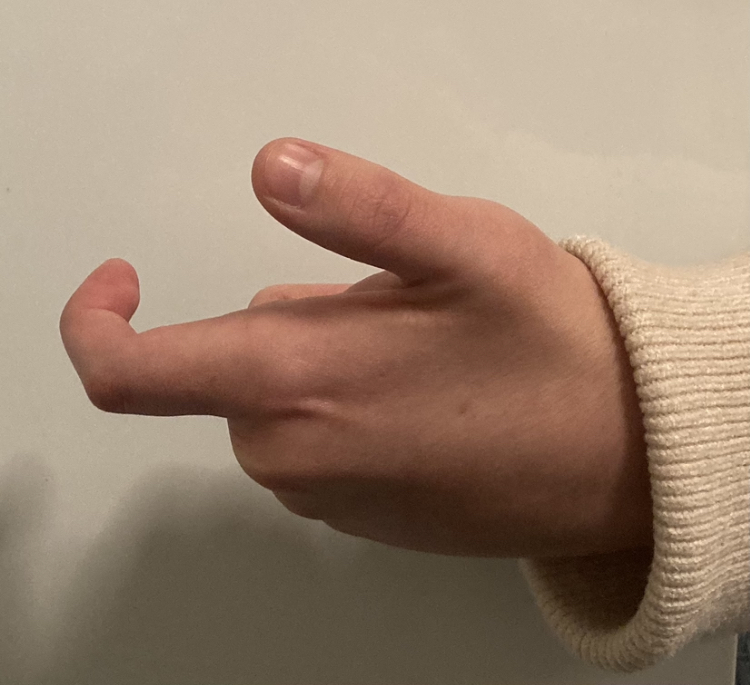
Text: The above image depicts the gesture, which is essentially a fist.
Context: One of my roommates who is of African American and Puerto Rican descent shed some more light on this gesture. She mentioned that the gesture is a fist and then went into the background of this gesture and how it came to be. She started off by saying, “for years in the African American community…[they] have always used a fist as a significance of saying power to the people, it’s a way to show allyship with each other, like to say I’m with you brother, I’m with you sister…it eventually became the logo of the Black Lives Matter movement”. Overall she said that “it’s always had the same meaning…it was to better the circumstances and oppression that black people face”. I then went on to ask about the importance of this gesture to her and she said that “as a child [she] would watch movies about the black panthers and [she] grew up meeting people that was part of the black panther party or that marched with Martin Luther King or Malcolm X because [her] mom immersed [she] in that stuff…they would tell [her] the significance of the fist and how it was like a signal to each other…like peace be with you brothers”. She went on to talk about how “the gesture took on a different meaning once the Black Lives Matter movement started to gain traction”. Overall, when asked of its importance she said, “it’s important because it shows allyship with each other in the community…it means community and I’m a black woman and I don’t want to be oppressed”.
Analysis: While to others this might look like a simple fist or a sign of victory (like you see in the movies), this hand gesture has so much more meaning to the African American community. Looking back through history they have experienced so much hardship, which is why this gesture has become so important to this community. It could have stood as a sign that one is not alone. Through the struggles, this gesture reminds those within this community to stay strong and that there are people who stand together. We can see this strong sense of community in the African American community during the Black Lives Matter movement, as well as the support from other communities.

